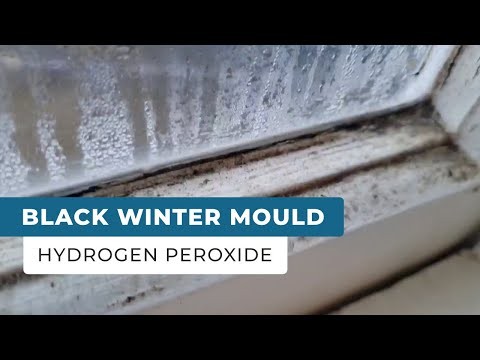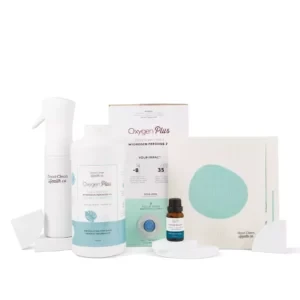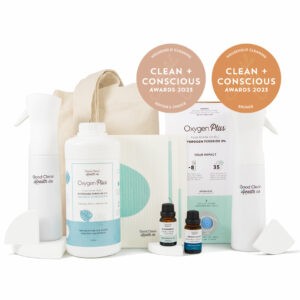13 Cleaning Tips For Black Mould, STILL A Major Health Issue in Many New Zealand Homes
BLACK MOULD REMOVAL – CURTAINS, SUEDE, WALLS, WOODEN FURNITURE, CANVAS TENTS, CANVAS AWNINGS, AND CEILINGS – WITHOUT NASTY CHEMICALS.
READ 13 CLEANING TIPS BELOW
- What causes black mould?
- Why use Hydrogen Peroxide for removing back Mould?
- What are the health effects of black mould?
- How to get rid of black mould?
- How to remove black mould around windows?
- How to remove mould from curtains with thermal backing?
- How to get mould out of clothes?
- How to get mould off curtains?
- How to clean mould off suede?
- How to get rid of black mould off walls?
- How to get mould off wooden furniture?
- How to get mould off canvas tent?
- How to remove mould from canvas awning?
- How to get mould out of carpet?
- Can I use baking soda and hydrogen peroxide together to remove black mould?
Black mould is a type of fungus that can grow in homes, often in damp or humid conditions. Black mould can bring on many medical issues, including respiratory problems, skin irritation, headaches, and an allergic reaction to mould treatment using harsh chemicals like bleach in cleaning solutions.
What causes black mould?
Black Mould is frequently discovered in damp areas like kitchens, bathrooms, and concealed walls. In addition, window condensation is a significant issue in New Zealand homes. This is because most of our homes are rather humid, and most single-glazed windows produce moisture.
Oxygen Plus – Food Grade Hydrogen Peroxide is perfect for black mould removal and prevention. Our product is non-toxic, 100% biodegradable, and safe for children, pets, and people of all ages.
If you’ve ever had black mould in your home, you know how important it is to remove it as quickly as possible. Not only is black mould unsightly, but it can also be dangerous to your family’s health.
FEEDBACK FROM OUR CUSTOMERS

Fantastic mould remover
This product removed the mould from the inside of my curtains after leaving it on overnight- fantastic! Very pleased!!
Charlotte S.

Love it!
These are a great addition to my cleaning products and fantastic at removing Mould or mildew as well!
P C

I have used it to clean everything in place of normal household cleaner and bleach, including windows, shower, basins, etc. Very happy. I love the sound of mould bubbling and dissolving.
Dale G.
Why use Hydrogen Peroxide for removing back Mould?
Hydrogen Peroxide is a popular choice for treating mould because it is effective and safe. Unlike other mould treatments, hydrogen peroxide will not cause an allergic reaction. In addition, hydrogen peroxide is not toxic to humans or animals, so it is safe to use around the home. Hydrogen peroxide kills mould cells, preventing the mould from spreading.
Using Oxygen Plus regularly to wipe window seals and other surfaces around your home will not only kill and prevent mould spores and mildew but also reduce viruses and bacteria to improve the air quality in your home.
What are the health effects of black mould?
Black mould can cause black mould symptoms, including respiratory infections, allergic reactions, and asthma. Inhaling black mould spores can cause inflammation of the lungs and airways, leading to difficulty breathing. Black mold exposure can also produce toxins that cause neurological problems, such as headaches, memory loss, and fatigue. People with black mould poisoning may also experience skin irritation, nausea, and vomiting. If you think you have been exposed to black mould, it is crucial to see a doctor as soon as possible. Early diagnosis and treatment are essential to avoid serious health complications.
www.who.int
CLEANING TIPS
How to get rid of black mould?
One of the most effective ways to eliminate the black mould is to use hydrogen peroxide. Hydrogen peroxide is a powerful disinfectant that kills mould spores and prevents them from spreading.
Start by vacuuming up any loose mould spores using a HEPA vacuum. Then, mix one-part Oxygen Hydrogen Peroxide 3% with one part of water in a Mister 360 Reusable Spray Bottle. Next, mist the affected area with the solution and let it sit for 10-15 minutes. Finally, use a damp cloth to wipe away the mould and spores. Repeat as needed until the mould is gone. With a bit of elbow grease, you can get rid of black mould for good!
With regular use of hydrogen peroxide, you should be able to keep black mould at bay.
How to remove black mould around windows?
One of the most common places for black mould growth is around window frames. This is usually due to window condensation, which can create the perfect conditions for mould to thrive. Thankfully, hydrogen peroxide is an effective way to remove black mould. Mix one part Oxygen Hydrogen Peroxide 3% with three parts water, and spray the solution onto the affected area. Leave it for a few minutes before wiping it away with a clean cloth. Repeat this process until the mould is gone. You can also prevent black mould from developing in the future by reducing window condensation. Ensure that your windows are properly sealed, and use an air conditioner or dehumidifier to keep the air around your window frames dry. By taking these steps, you can help to keep your home free of black mould.
How to remove mould from curtains with thermal backing?
If you have curtains with a thermal backing that has become mouldy, you can remove the mould using hydrogen peroxide. First, remove the curtains from the window and vacuum them using a HEPA vacuum to remove any loose spores. Next, mix one-part Oxygen Hydrogen Peroxide 3% with two parts water in a Mister 360 Reusable Spray Bottle and mist the solution onto the curtains. The Mister 360 will only wet the top of the back mould and won’t get the curtains too wet.
Let the curtains sit for 15-30 minutes, and then use a sponge or brush to scrub away the mould. Finally, rinse the curtain with clean water and allow it to dry in a well-ventilated area.
Regularly using hydrogen peroxide around your home should reduce mould and mildew spores for a healthier home.
Note: You should test a small hidden area of your curtains before using hydrogen peroxide because it can have a bleaching effect. Use a diluted solution of 0.5% (1:4) to remove black mould if bleaching occurs.
How to get mould out of clothes?
Mould and mildew can quickly ruin your clothes, causing them to smell musty and look stained. But thankfully, there are a few simple ways to get rid of mould and mildew from your clothes using hydrogen peroxide. Mix one part hydrogen peroxide with two parts water in a spray bottle and spritz the solution onto the affected areas. Let it sit for a few minutes before laundering as usual. You can add a cup of hydrogen peroxide to your washing machine and regular detergent to help kill mould and mildew spores. Be sure to use this method on white or light-coloured clothing, as hydrogen peroxide can cause fading.
How to get mould off curtains?
How to get mould off curtains can be a tricky task. Mould loves to grow in damp, warm areas, and curtains are the perfect breeding ground for mould spores. The first step in getting rid of mould is to identify the source of the problem. If your curtains are located in a humid room, you may need to invest in a dehumidifier. In addition, make sure to keep the area well-ventilated by opening windows and doors regularly. Once you’ve addressed the source of the problem, you can start cleaning the mould. Hydrogen peroxide is an effective way to kill mould spores, and it can also help to prevent future growth. Mix one part of Oxygen Hydrogen Peroxide 3% with two parts of water in a spray bottle and apply it to the affected area. Let the mixture sit for 10-15 minutes before wiping it away with a clean cloth. You may need to repeat this process several times before all the mould is gone, but eventually, your curtains will be mould-free!
How to clean mould off suede?
Suede is a delicate fabric, so you’ll need to take care when cleaning it to avoid damaging the material. Hydrogen Peroxide is an excellent option for cleaning mould off of suede. Mix equal parts of water and hydrogen peroxide in a spray bottle and mist onto the mouldy areas. Let the solution sit for a few minutes before wiping it away with a clean cloth or brush. You may need to repeat this process a few times to remove the mould altogether. With regular cleaning, you can keep your suede looking new for years to come.
How to get rid of black mould off walls?
Hydrogen Peroxide is an excellent natural cleaning solution and can also be effective for removing mould from walls. To get started, mix equal parts hydrogen peroxide 3% and water in a mister spray bottle. Then, mist the mixture onto the mouldy areas of your wall and let it sit for 10-15 minutes. After that, you can scrub the area with a brush or cloth to remove the mould. Be sure to rinse the area afterwards to remove any residual hydrogen peroxide to avoid damage to the paint. If you find that the mould persists, you may need to repeat the process or use a stronger solution of Hydrogen Peroxide 6%.
How to get mould off wooden furniture?
Many people don’t know how to get mould off their wooden furniture. Some people think it’s impossible to get rid of, but that’s not true! There are a few different ways that you can use hydrogen peroxide to get rid of mould on your wooden furniture. First, you can make a 50/50 mixture of hydrogen peroxide 3% and water. Then, using a clean cloth, sponge, or brush, apply the mixture to the mouldy areas of your furniture. Let it sit for about an hour before wiping it off with a damp cloth. You may need to repeat this process a few times to remove the mould altogether. Another way to use hydrogen peroxide is to pour it directly onto the mouldy areas and let it sit for an hour or two before wiping it away with a damp cloth. This method may take a little longer, but it will eventually work.
How to get mould off canvas tent?
Mould and mildew can quickly build up on canvas tents, especially if stored in damp conditions. Not only is mould unsightly, but it can also cause the fabric to deteriorate and make the tent less waterproof. The good news is that you can take a few simple steps to get rid of mould and mildew. One effective way to remove mould is to scrub the affected area with a solution of hydrogen peroxide and water. Mix equal parts of each in a bucket and apply the mixture to the mouldy area with a soft brush. Let it sit for a few minutes before rinsing it with clean water. You may need to repeat this process a few times to remove all the mould altogether. Regular cleaning and proper storage allow you to keep your canvas tent in good condition for many years.

How to remove mould from canvas awning?
Black Mould can be a difficult problem to solve, especially when it comes to canvas awnings. Not only is it unsightly, but it can also cause the fabric to rot and become weakened. Therefore, removing mould as soon as you notice it is essential. One way to remove mould from canvas awnings is to use hydrogen peroxide. Hydrogen peroxide is a strong oxidising agent that can kill mould spores and prevent them from regrowing. To use hydrogen peroxide:
- Mix it with water at a ratio of 1:3 and apply it to the affected area with a sponge or brush.
- Allow the mixture to sit on the mould for 10-15 minutes before rinsing it away with clean water.
- Repeat this process until the mould is gone, and then dry the area thoroughly to prevent future mould growth.
Note: Another option is diluted bleach, which should be used as a last resort as it can damage the awning’s fabric.
How to get mould out of carpet?
First, remove as much mould as possible from the carpet using a HEPA vacuum cleaner. Next, create a mixture of one part hydrogen peroxide and two-part water. Using a Mister spray bottle, apply the mixture to the affected areas of the carpet. Allow the mixture to sit for several minutes before blotting it with a clean cloth. Repeat this process until the mould is gone. Finally, vacuum the area again to remove any remaining residue. With regular cleaning, hydrogen peroxide can help to keep your carpet looking and feeling like new, reducing viruses and bacteria in your home.
Note: You should test a small hidden area of your carpet before using hydrogen peroxide because it can have a bleaching effect. Use a diluted solution of 0.5% (1:4) to remove black mould if bleaching occurs.
Can I use baking soda and hydrogen peroxide together to remove black mould?
Baking soda and hydrogen peroxide are two commonly used household ingredients that effectively remove black mould. Baking soda is a natural abrasive that can help to scrub away mould, while hydrogen peroxide is a powerful disinfectant that can kill mould spores. Together, these two ingredients can be effective in removing mould from surfaces. Additionally, baking soda and hydrogen peroxide are inexpensive, making them a convenient choice for removing mould.
Takeaway
Food Grade Hydrogen Peroxide is not only effective at removing black mould without harsh chemicals, but it also has hundreds of uses around the home and garden. Combine everything you need into one non-toxic, 100% biodegradable solution to make cleaning and plant care easier.
As a result, hydrogen peroxide has quickly become a household favourite in New Zealand.



